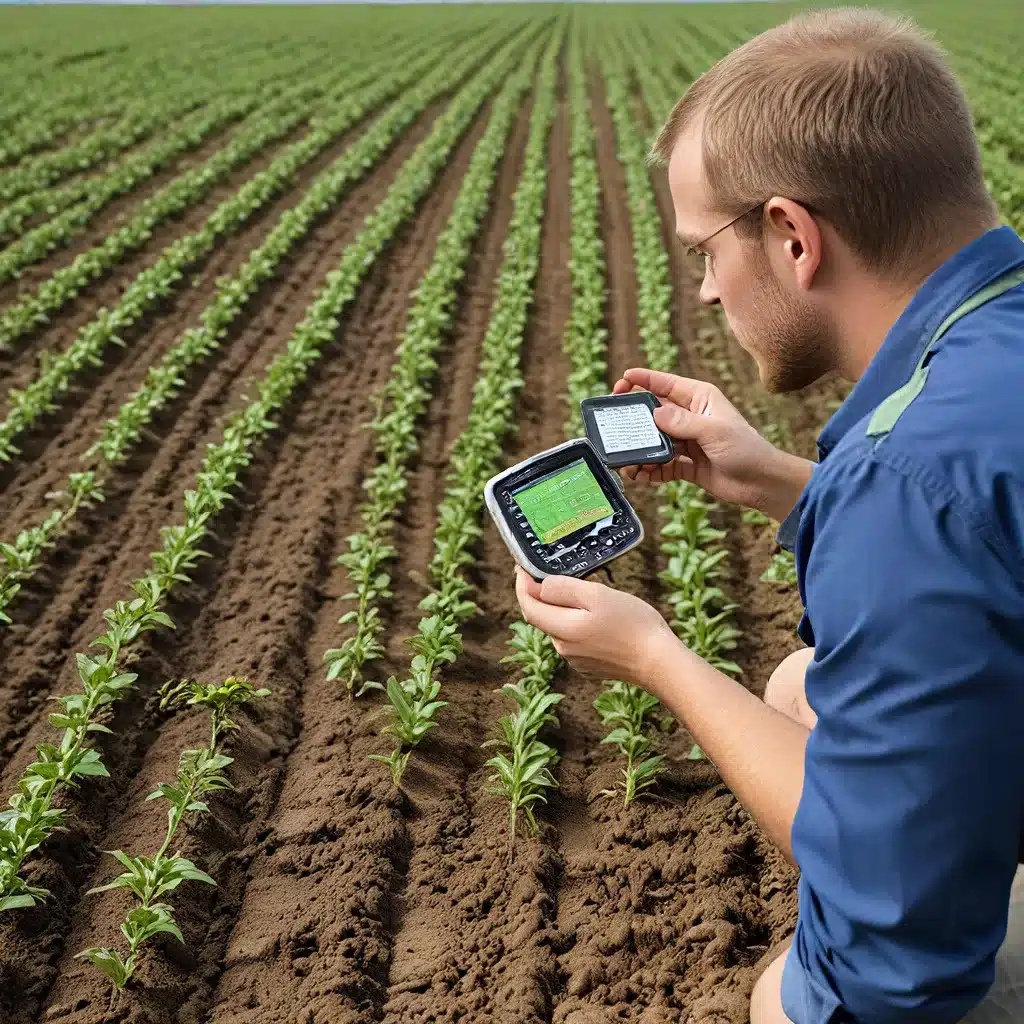
Sensor networks have become integral to the evolution of precision agriculture and sustainable farming practices. By strategically deploying a network of sensors throughout agricultural fields and greenhouses, farmers can gather real-time, granular data on a wide range of environmental conditions and plant health metrics. This data-driven approach allows for optimization of resource management, reduced waste, and enhanced crop yields.
However, the success of any sensor network deployment hinges on the accuracy and reliability of the sensor data collected. Proper calibration of sensors is critical to ensuring the integrity of this data, which in turn supports the decision-making that drives precision farming initiatives. In this article, we’ll explore the key considerations and best practices for calibrating sensors in agricultural sensor networks, as well as delve into the larger implications for IoT (Internet of Things) applications and energy management strategies.
Ensuring Sensor Accuracy through Calibration
Sensor calibration is the process of adjusting a sensor’s output to match a known reference value. This is essential for maintaining the precision and reliability of sensor data over time, as sensors can drift or become miscalibrated due to environmental factors, wear and tear, or other influences.
Precision agriculture research has identified several key steps in the calibration process for agricultural sensor networks:
-
Establishing Baseline Readings: Before deployment, sensors must be tested against known, calibrated reference devices to establish their initial accuracy levels. This provides a benchmark for comparison over time.
-
Scheduled Recalibration: Sensors should be regularly recalibrated, either automatically or manually, to account for any drift or degradation. The frequency of recalibration will depend on the sensor type, environmental conditions, and criticality of the application.
-
Cross-Validation: Deploying redundant sensors or using multiple data sources can help validate sensor readings and identify any anomalies or discrepancies that may indicate the need for recalibration.
-
Contextual Awareness: Understanding the operating environment and potential sources of interference or measurement errors is crucial for interpreting sensor data and determining appropriate calibration adjustments.
By adhering to these best practices, farmers and IoT system operators can ensure that their sensor networks provide reliable, actionable data to guide precision farming decisions and sustainable resource management.
Sensor Network Topologies and Design Considerations
The design of the sensor network itself is another critical factor in achieving accurate and dependable data collection. Several network topologies are commonly used in precision agriculture, each with its own advantages and trade-offs:
| Topology | Advantages | Disadvantages |
|---|---|---|
| Star Network | – Simple to implement – Centralized control and data collection |
– Limited scalability – Single point of failure |
| Mesh Network | – Increased resilience and redundancy – Self-healing capabilities |
– Higher complexity – Increased power consumption |
| Hybrid Network | – Combines benefits of star and mesh – Scalable and reliable |
– Requires more sophisticated coordination |
Factors such as sensor distribution, communication protocols, and power management must also be carefully considered when designing an agricultural sensor network to ensure reliable data collection and energy efficiency.
Securing Sensor Networks and IoT Devices
As sensor networks and IoT technologies become more prevalent in precision agriculture, cybersecurity has emerged as a critical concern. Malicious actors could potentially exploit vulnerabilities in these systems to disrupt operations, manipulate data, or gain unauthorized access to sensitive information.
Robust security protocols and best practices are essential for protecting agricultural sensor networks, including:
- Encryption and Authentication: Ensuring that all data transmitted between sensors and the central control system is encrypted and that devices are properly authenticated to prevent unauthorized access.
- Firmware Updates and Patch Management: Regularly updating sensor firmware and applying security patches to address known vulnerabilities and mitigate emerging threats.
- Access Controls and Monitoring: Implementing role-based access controls and continuous monitoring to detect and respond to suspicious activity within the network.
- Network Segmentation and Firewalling: Dividing the sensor network into isolated segments and deploying firewalls to limit the spread of potential attacks.
By proactively addressing security concerns, agricultural businesses can safeguard their sensor networks and the valuable data they generate, ensuring the integrity and reliability of their precision farming operations.
Energy Management Strategies for Sustainable Sensor Networks
Powering sensor networks in remote or off-grid agricultural settings presents unique energy management challenges. Relying on traditional grid-based power sources may not be feasible, necessitating the use of alternative energy solutions to ensure the continuous operation of these critical systems.
Solar power and energy harvesting technologies have emerged as promising options for sustainable sensor network deployment. By integrating photovoltaic cells or piezoelectric generators into sensor nodes, farmers can leverage renewable energy sources to power their networks without the need for grid connectivity or frequent battery replacements.
Additionally, energy-efficient sensor design and optimized network protocols can further enhance the longevity and reliability of agricultural sensor networks. Techniques such as duty-cycling, data compression, and adaptive sampling can minimize power consumption and extend the operational lifetime of individual sensor nodes.
By combining renewable energy solutions and energy-efficient design principles, farmers can create self-sustaining sensor networks that support their precision agriculture and sustainable farming initiatives in an environmentally responsible manner.
The Future of Sensor Networks in Precision Agriculture
As the Internet of Things continues to transform the agriculture industry, sensor networks will play an increasingly vital role in driving data-driven decision-making and sustainable farming practices. By calibrating sensors for reliable data collection, designing secure and energy-efficient network topologies, and leveraging renewable energy sources, farmers can unlock the full potential of precision agriculture and contribute to a more food-secure and environmentally sustainable future.
The sensor networks community is at the forefront of these advancements, constantly innovating and collaborating to push the boundaries of what’s possible in the realm of connected agriculture. As sensor technologies and IoT capabilities continue to evolve, the opportunities for transformative change in the farming industry are both exciting and promising.